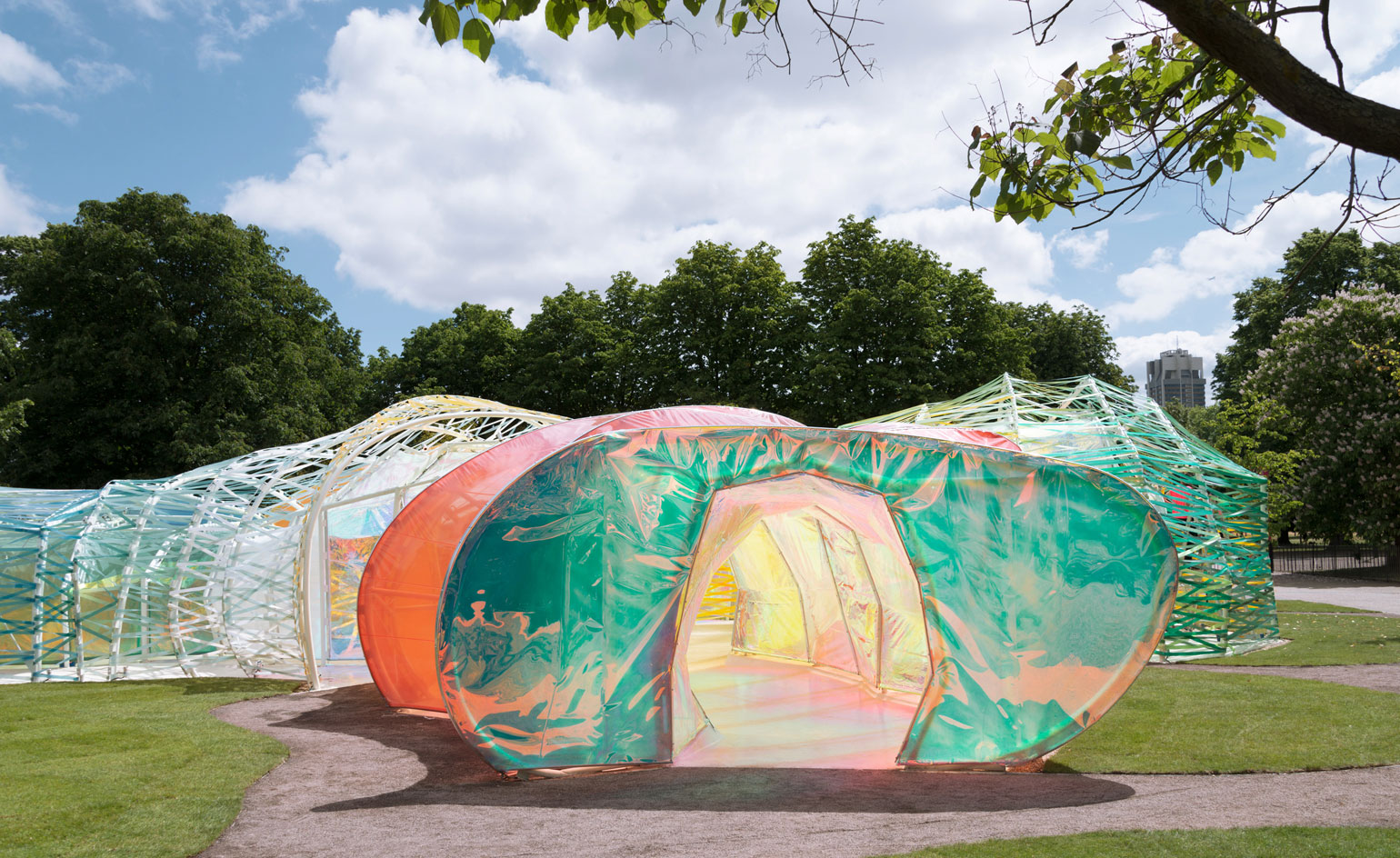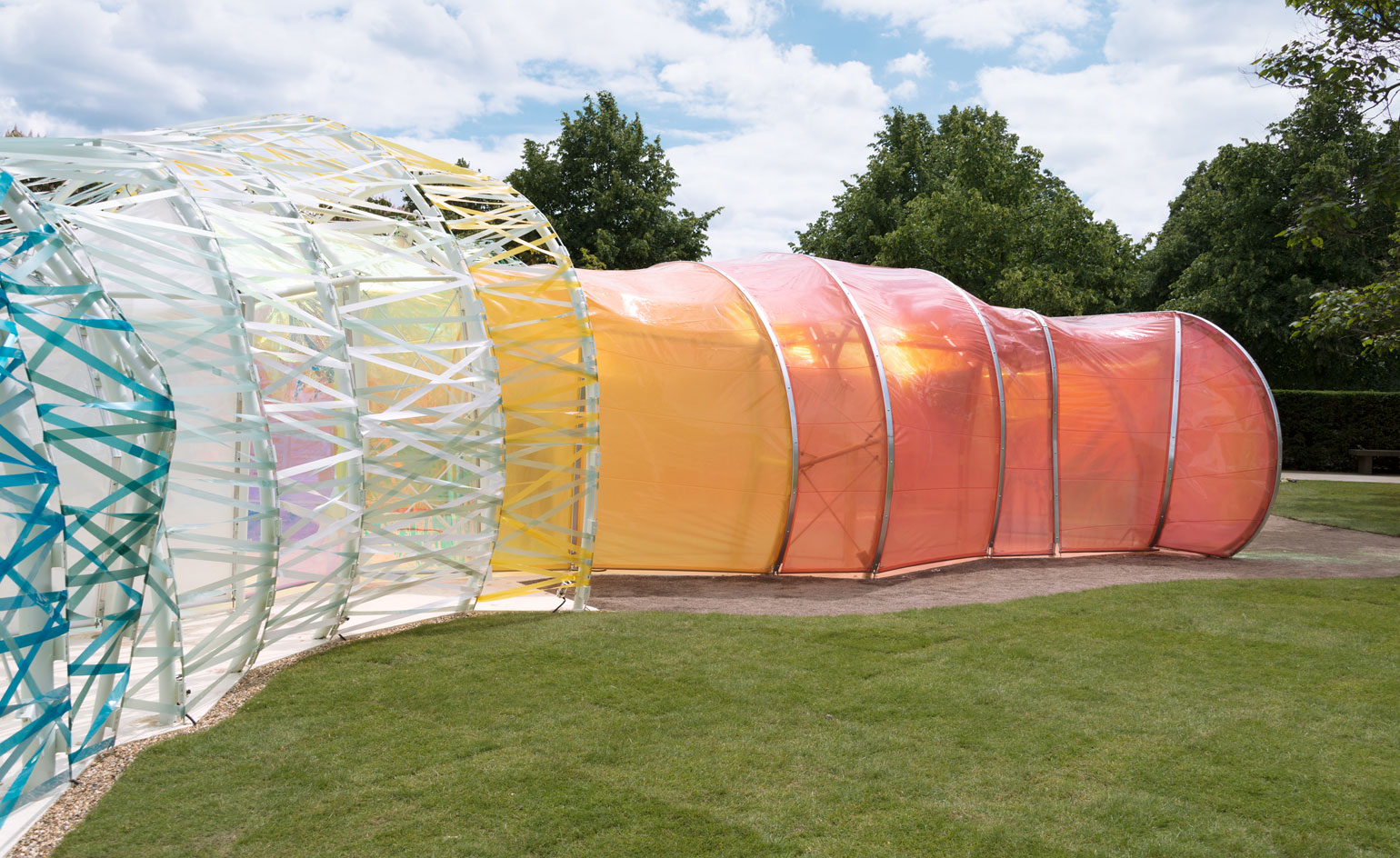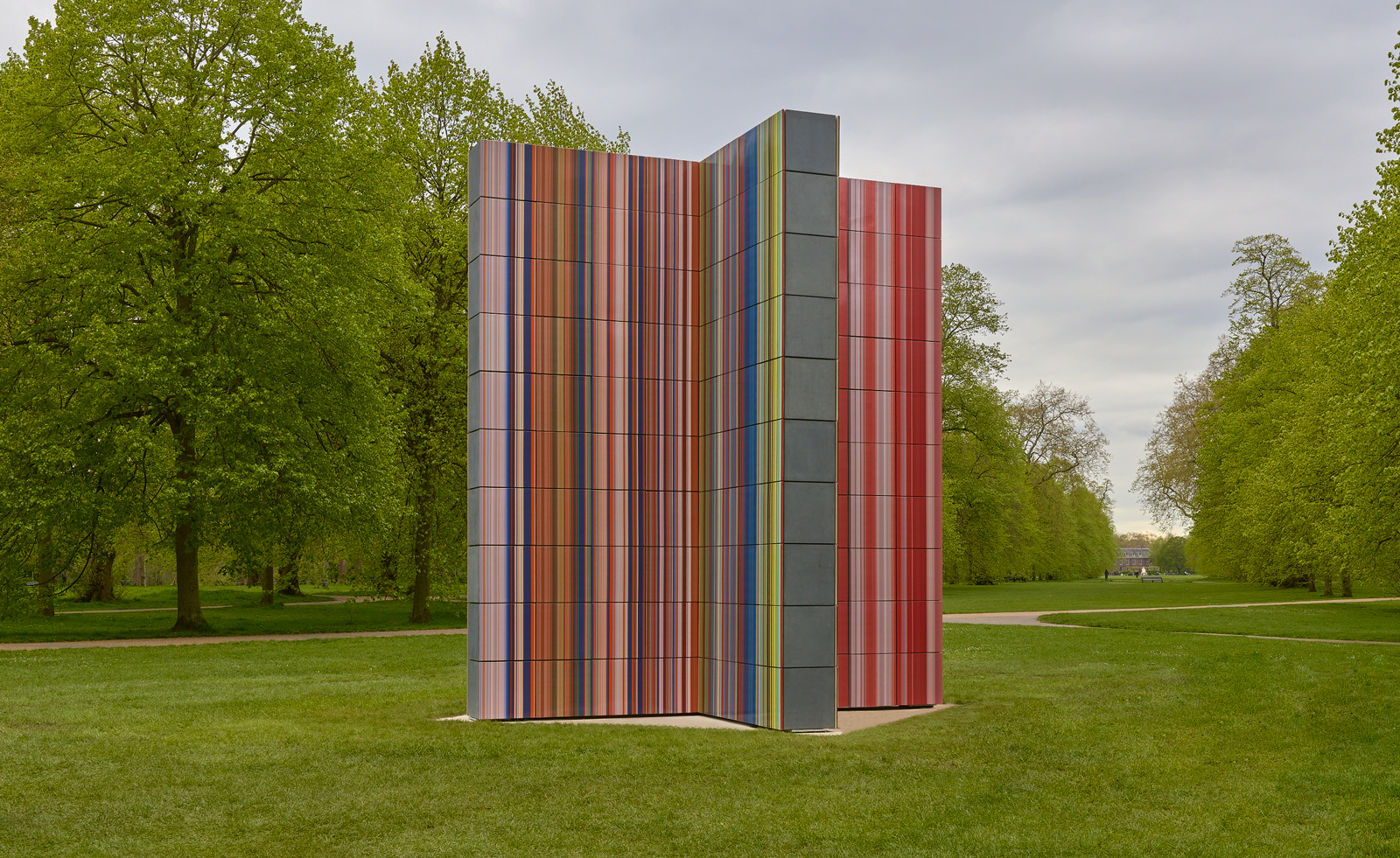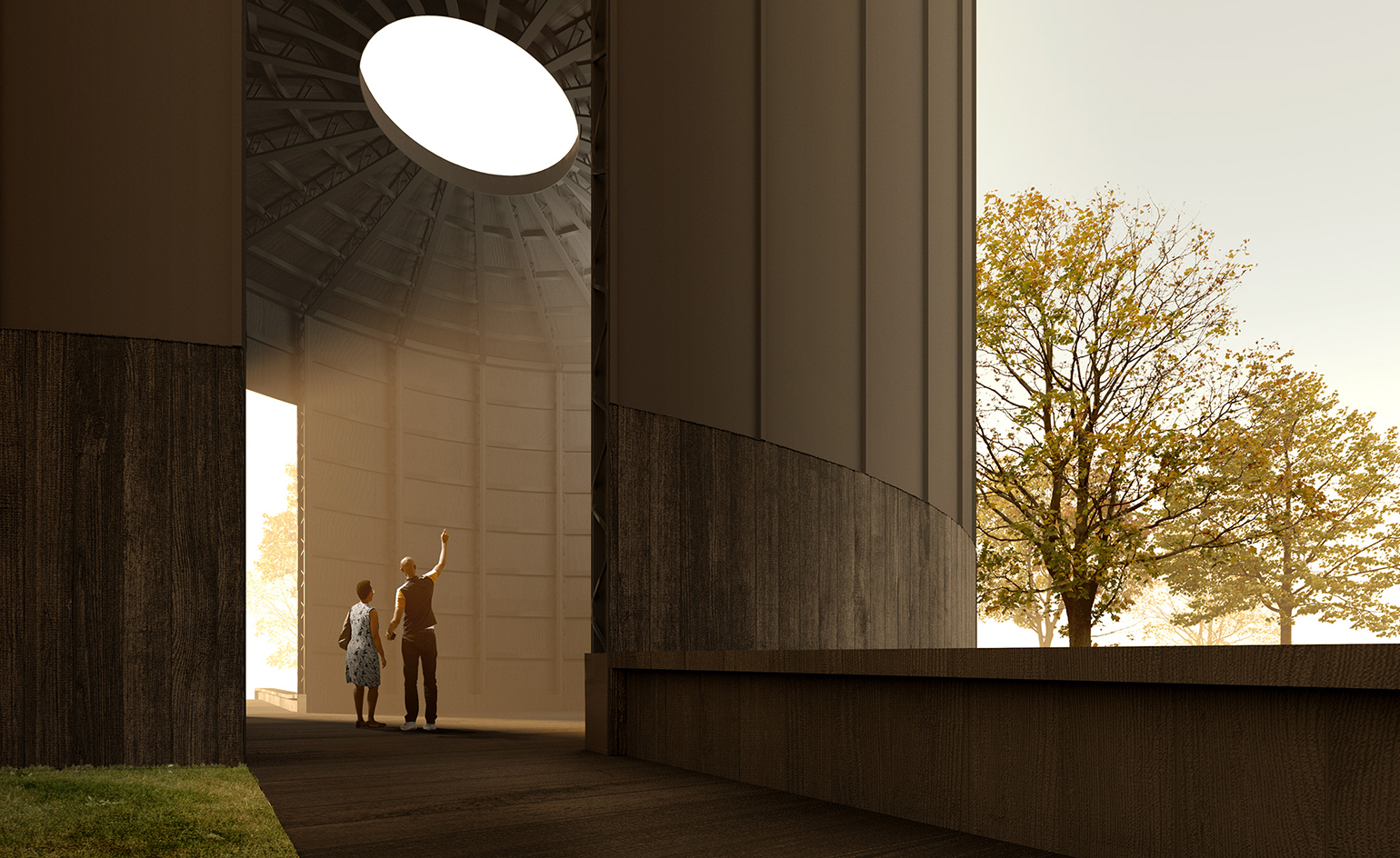SelgasCano adds a splash of colour to Kensington Gardens with the new Serpentine Pavilion

There's always something playful about the annual Serpentine Pavilion designs. These temporary structures, making their appearance for a few months every summer on the grounds of London's Kensington Gardens, have an inherent sense of discovery and mischievousness about them. As structures, they are conceived to serve a functional role (a park's meeting and resting space), but they are also follies designed to inspire and excite, freed from some building constraints by their transient nature. This year's offering by Spanish architecture practice SelgasCano – headed by José Selgas and Lucía Cano – is no exception.
Awash with colour, it's probably even bolder and brighter than Jean Nouvel's brilliant red 2010 edition; the low pavilion's amorphous shape is like nothing the park has seen before. Eye-catching and photogenic, it brings to mind a sprawling, colourful caterpillar, or the retro-sci-fi set of an old episode of Doctor Who.
Up close, the structure feels transparent and light – almost too light at times, its surface gently moving in the opening day's light wind. Its thin skin, made out of panels of translucent, multi-coloured fluorine-based polymer (ETFE) 'woven through and wrapped like webbing', covers several steel-framed tunnels that invite you to explore its core. The architects say their inspiration came not only from the site and context, but also from the London Underground tunnel system; it therefore features a number of entrances (and exits) and 'secret' corridors between layers, for free, yet somehow structured circulation. A cafe sits at its heart, offering ice creams and refreshments courtesy of Fortnum & Mason.
Colour and transparency are frequent elements in the architects' work. Their own office, tucked away in the woods outside Madrid, is partly clad in clear glass, uniting the workspace and nature, while their Merida Factory in Spain and the offices of collaborative workspace Second Home in London bear the practice's signature colours and bold shapes. For the Serpentine, visitor experience defined SelgasCano's approach. 'We sought a way to allow the public to experience architecture through simple elements,' they say. 'Structure, light, transparency, shadows, lightness, form, sensitivity, change surprise, colour and materials.'
In many ways, the unveiling is a landmark one. It certainly marks the start of the British high summer season, but with this year's completed structure, the gallery is also celebrating the hugely popular scheme's 15th year. (It is, the gallery explains, one of the top-ten most visited architectural and design exhibitions in the world). It also signifies the closing of this year's month-long London Festival of Architecture; the pavilion's opening weekend is the festival's very last.
Finally, it completes a series of playful shows, currently ongoing at various London venues – the Hayward's Carsten Höller slides, RIBA's Brutalist Playground installation... even this year's RA Summer Exhibition looks into ideas of landscape and outdoors explorations in its architecture room, curated by Ian Ritchie.
This is just the beginning for the pavilion's four month lifespan. A connected series of talks and events are planned for the duration, while the Serpentine has also launched a brand new initiative around it – Build Your Own Pavilion: Young Architects Competition – a digital platform for young people to submit their own pavilion designs. Winners will be selected at the end of the summer.

The structure is covered in panels of translucent, multi-coloured fluorine-based polymer (ETFE).

The material is 'woven through and wrapped like webbing', explain the architects.

This skin encloses several tunnels between the building's outer and innner layers.

This creates many different entrances (and exits) to the pavilion's heart.

A cafe, serving drinks and ice cream courtesy of Fortnum & Mason, sits at the central open space inside.

The architects were partly inspired by the London Underground system of tunnels.

The structure's bright colours come alive at night, when lit from within.

But even during daylight the pavilion's synthetic skin shines and shimmers.

The structure's main frame is made out of steel.

The pavilion was created with the help of engineering firm AECOM in collaboration with David Glover.

This is not the first pavilion commission for the engineering team...

... who provided expert bespoke technical design solutions for the SelgasCano scheme.

The pavilion's colours and unusual shapes comprise the design signature of its Spanish creators.
ADDRESS
Serpentine Gallery
Kensington Gardens, London
Receive our daily digest of inspiration, escapism and design stories from around the world direct to your inbox.
Ellie Stathaki is the Architecture & Environment Director at Wallpaper*. She trained as an architect at the Aristotle University of Thessaloniki in Greece and studied architectural history at the Bartlett in London. Now an established journalist, she has been a member of the Wallpaper* team since 2006, visiting buildings across the globe and interviewing leading architects such as Tadao Ando and Rem Koolhaas. Ellie has also taken part in judging panels, moderated events, curated shows and contributed in books, such as The Contemporary House (Thames & Hudson, 2018), Glenn Sestig Architecture Diary (2020) and House London (2022).
-
 How We Host: Interior designer Heide Hendricks shows us how to throw the ultimate farmhouse fête
How We Host: Interior designer Heide Hendricks shows us how to throw the ultimate farmhouse fêteThe designer, one half of the American design firm Hendricks Churchill, delves into the art of entertaining – from pasta to playlists
-
 Arbour House is a north London home that lies low but punches high
Arbour House is a north London home that lies low but punches highArbour House by Andrei Saltykov is a low-lying Crouch End home with a striking roof structure that sets it apart
-
 25 of the best beauty launches of 2025, from transformative skincare to offbeat scents
25 of the best beauty launches of 2025, from transformative skincare to offbeat scentsWallpaper* beauty editor Mary Cleary selects her beauty highlights of the year, spanning skincare, fragrance, hair and body care, make-up and wellness
-
 A life’s work: Hans Ulrich Obrist on art, meaning and being driven
A life’s work: Hans Ulrich Obrist on art, meaning and being drivenAs the curator, critic and artistic director of Serpentine Galleries publishes his memoir, ‘Life in Progress’, he tells us what gets him out of bed in the morning
-
 Danielle Brathwaite-Shirley’s multiplayer experience at London’s Serpentine invites visitors to connect in the real world
Danielle Brathwaite-Shirley’s multiplayer experience at London’s Serpentine invites visitors to connect in the real worldDanielle Brathwaite-Shirley rethinks a typical art gallery visit with a new exhibition at Serpentine which encourages viewers to get off the screen
-
 Looking at people looking at art: inside the mind of a gallery attendant
Looking at people looking at art: inside the mind of a gallery attendantVisitor experience workers at London’s Tate Modern, Serpentine, Barbican and V&A share what it’s like to watch people looking at art during a time of changing attention spans and rising vandalism
-
 Gerhard Richter unveils new sculpture at Serpentine South
Gerhard Richter unveils new sculpture at Serpentine SouthGerhard Richter revisits themes of pattern and repetition in ‘Strip-Tower’ at London’s Serpentine South
-
 Tomás Saraceno’s spider-led show at Serpentine has legs, and lots of them
Tomás Saraceno’s spider-led show at Serpentine has legs, and lots of them‘Web(s) of Life’, the first major UK show by Tomás Saraceno, is a living, collaborative and multi-species call to climate action involving everything from dog-friendly sculptures to ‘spider diviners’ – but no phones allowed
-
 Steve McQueen to screen his harrowing film 'Grenfell' at London’s Serpentine
Steve McQueen to screen his harrowing film 'Grenfell' at London’s SerpentineAcclaimed film director and artist Steve McQueen will screen his film, Grenfell, at London’s Serpentine South gallery (7 April-10 May 2023), six years after the Grenfell Tower block blaze killed 72
-
 Barbara Chase-Riboud at Serpentine: alternative monuments, parallel histories
Barbara Chase-Riboud at Serpentine: alternative monuments, parallel histories‘Infinite Folds’ at Serpentine North Gallery celebrates Barbara Chase-Riboud, the American artist, novelist and poet who has spent more than seven decades pondering history, memory, and the public monument
-
 Theaster Gates’ design for Serpentine Pavilion 2022 revealed
Theaster Gates’ design for Serpentine Pavilion 2022 revealedThe American artist and urban planner reveals his plans for the Serpentine Pavilion 2022. Black Chapel has spirituality, music and community at its heart